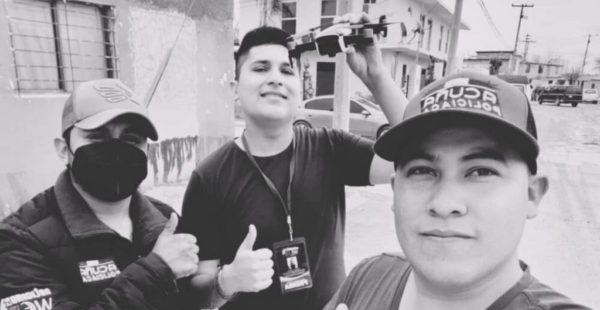Mexican media worker Saul Tijerina killed in Ciudad Acuña

HAVANA TIMES – Mexican authorities must undertake a swift and transparent investigation into the killing of media worker Saúl Tijerina Rentería, and determine whether he was targeted for his work, the Committee to Protect Journalists said today.
Tijerina’s family lost contact with him early in the morning of June 22, and his body was found near his vehicle in Ciudad Acuña, in the northern Mexican state of Coahuila, later that morning with multiple stab wounds, according to news reports.
Coahuila authorities announced the arrest of two suspects in the killing later that day.
Tijerina worked at a local factory and as a drone camera operator, and he provided footage to the Facebook-based news outlets La Policiaca and Noticias en la Web, according to those reports.
“In light of the deadly environment for the media in Mexico, including the recent killing of reporter Gustavo Sánchez in Oaxaca, it’s essential that authorities thoroughly investigate the killing of Saúl Tijerina Rentería and determine whether his journalistic work could have been the motive,” said Jan-Albert Hootsen, CPJ’s Mexico representative. “The cycle of violence and impunity for journalists in Mexico can only be broken by rigorous police work and prosecutions.”
La Policiaca editor Aldahir Mendoza told CPJ in a phone interview that a source familiar with the investigation told him that a message had been found near Tijerina’s body, but said he had not been told what the message said.
Mendoza told CPJ that Tijerina had worked for La Policiaca for about six months, and provided drone footage of news events and occasionally standard camera photography. The editor of Noticias en la Web, who asked not to be named out of fear for their safety, told CPJ that Tijerina had provided similar services for that outlet for about 10 months.
Tijerina’s most recent work for Noticias en la Web included providing footage of the national earthquake simulation on June 21, according to the editor, who added that Tijerina recorded footage of “all kinds of news, including sports and crime and security.”
“His name never appeared on the website, he took footage and other reporters would get the byline for the stories,” the editor told CPJ. Both editors said that they were not aware of any threats to Tijerina’s life, and said that their outlets had not recently received threats either.
The editors told CPJ that they had heard that Tijerina had had “problems” with two of his coworkers at the factory, who they believed may have ties to a drug trafficking gang, but could not provide any further details.
Following the killing, Coahuila State Prosecutor Gerardo Márquez announced that authorities had apprehended two suspects, a 23-year-old identified as Lorenzo N., and 18-year-old Jordi Alejandro N., both allegedly members of a criminal gang. In a June 25 press conference, Márquez said that his office had not ruled out Tijerina’s media work as a possible motive, but that his office was also investigating whether Tijerina had a relationship with the gang.
CPJ repeatedly called the the Coahuila state prosecutor’s office for comment, but no one answered.
Mexico is the deadliest country in the Western Hemisphere for journalists, according to CPJ research. At least five journalist were killed there in direct relation to their work in 2020.





